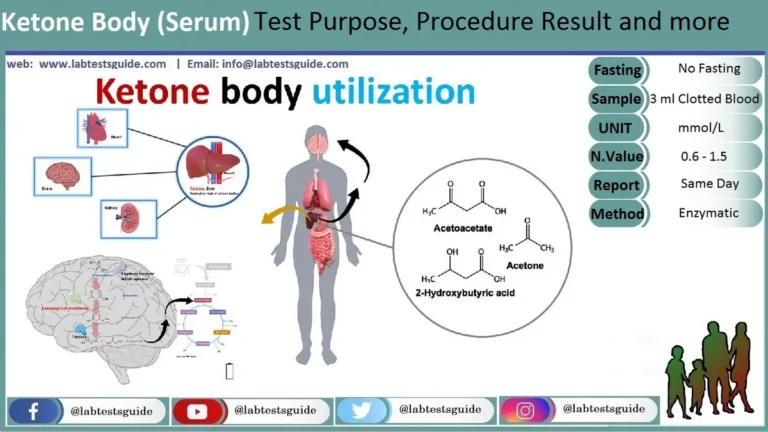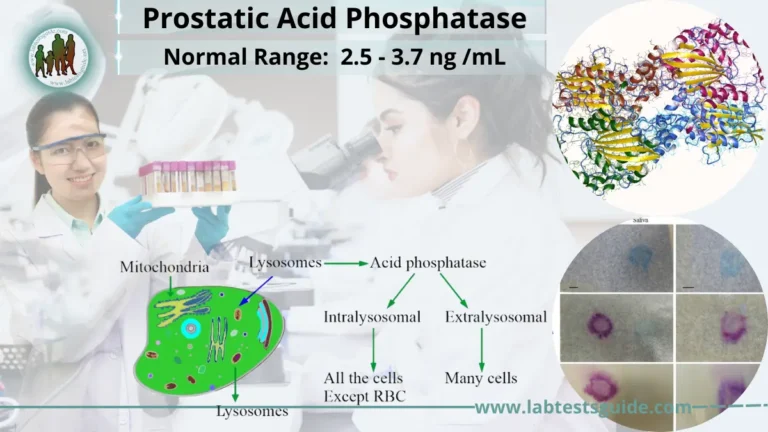Widal test is used for the diagnosis of enteric fever. Enteric fever refers to typhoid and paratyphoid caused by Salmonella typhi and Salmonella paratyphi (A, B, C) respectively. The bacterium is spread due to intake of food or water contaminated with the faeces of an infected person (poor hygienic conditions). Typhoid fever is significant cause of morbidity across the world, with an estimated 12 to 33 million cases occurring annually. Widal test is an easy, cheap, easily accessible and non invasive test to perform. It is of great significance in laboratories where blood cultures facility is not available (the results must be interpreted cautiously, as negative results do not exclude typhoid fever).

PRINCIPLE:
- The patient serum is allowed to react with suspensions of known antigens. If specific antibodies are present agglutination will be observed. Agglutination indicates the presence of antibodies to Salmonella antigens in the patient serum and vice vers
- Salmonella O and H antigen suspensions are used (TO, TH, AO, AH, BO, BH) to detect O (somatic) and H (flagellar) antibodies. Serial dilutions of the serum are tested to determine the titre.
- The highest dilution of the serum that shows agglutination will be the titre. The highest dilution next to positive result should be negative.
- The recommended method to perform a Widal test is by the tube agglutination technique; however, a slide agglutination test is also in use.
REQUIREMENTS:
- Serum sample
- Antigen suspension, S. typhi O
- Antigen suspension, S. typhi H
- Antigen suspension, S. paratyphi AO
- Antigen suspension, S. paratyphi AH
- Antigen suspension, S. paratyphi BO
- Antigen suspension, S. paratyphi BH
- Positive and negative controls (PC; NC)
- Saline (NaCl 9g/L)
- Mechanical rotator (80-100 rpm)
- Large slide
- Test tubes
- Test tube racks
- Disposable mixing sticks
SLIDE METHOD
Procedure:
- Bring the kit reagents and sample to room temperature.
- Place 80, 40, 20, 10, and 5 ul (equivalent to 0.08, 0.04, 0.02, 0.01 and 0.005 ml) of the serum to the squares in each row.
- Place similar quantities of positive and negative controls in separate circles.
- Gently mix the antigen vial (to ensure homogeneity) and place one drop to each of the circle.
- Mix the contents of each circle evenly with disposable sticks and spread over the complete area of the circle.
- Place the slide on mechanical rotator (80-100 rpm) for 1 minute.
- Examine for agglutination macroscopically and compare the results with positive and negative controls.
- The serum quantity on the slide represent following dilutions:
- 0.08 ml serum 1/20
- 0.04 ml serum 1/40
- 0.02 ml serum 1/80
- 0.01 ml serum 1/160
- 0.005 ml serum 1/320
Results:
- The highest dilution giving positive result will be the titre. If there is no agglutination, the titre of the serum will be less than 1/20. The degree of agglutination is read in accordance with the following scale:
- Complete agglutination ++++
- 75% +++
- 50% ++
- 25% +
- The sample which shows a titre of 1:80 or higher should be considered as clinically significant.
- In case of a positive reaction, confirm by a tube technique.

TUBE METHOD
Procedure:
- Bring the kit reagents and sample to room temperature.
- Set up six rows of 8 tubes each and label them from 1 to 6, NC and PC.
- Place 1.9 ml of saline (NaCl 9g/L) in tube no. 1 of each row.
- Place 1 ml of saline to all the remaining tubes (2-6, NC and PC)
- Place 0.1 ml of serum in tube no. 1 of each row.
- Place 0.1 ml of positive and negative controls in tube no. 7 and 8 labeled PC and NC in each row.
- Transfer 1 ml of the diluted serum from tube no. 1 to tube no. 2 and mix well.
- Go on with this serial dilution till tube no. 6 in each row.
- Discard 1 ml of diluted serum from tube no. 6 in each row.
- The dilutions of the serum in each row are as follows:

- Gently mix the antigen vials (TO, TH, AO, AH, BO and BH) and place one drop to all the tubes.
- Mix the contents of each tube thoroughly and incubate at 37oC for 18-24 hours.
- To accelerate the incubation procedure, place:
- O antigen tubes at 50oC for 4 hours.
- H antigen tubes at 50oC for 2 hours.
- Examine for agglutination macroscopically (by dislodging the sedimented button gently) and compare the results with positive and negative controls.
Results:
- The type of agglutination seen with O reactions is granular which is difficult to disperse while the H reactions agglutination is slightly of uneven type usually described as floccular (fluffy).
- A diagnostic titre is the titre which is found during active phase of the disease. A titre of 1:80 (Slide) and 1:120 (Tube) or more is considered significant.

Reporting:
- Widal test is reported by giving the titre for both O and H antibodies. The antibody titre is taken as the highest dilution of the serum in which agglutination occurs. If no agglutination occurs the test should be reported as:
- typhi O titre < 1 in 20
- typhi H titre < 1 in 20
Quality Control:
- Positive and negative controls (animal serum in sodium azide) are included in the kit and must be run parallel to every test performed.
Interpretation Of Widal Test:
- In young children (upto 5 years) O antibody titre is raised more than the H titre, while in adults, the opposite is mostly true.
- In the first week of infection, 70% of the adult patients show increase in titre.
- Hypoproteinaemia may result in normal O and H antibody tire, though the patient has active typhoid. This occurs in about 10% patients.
- Patients who already had enteric fever in the past can develop anti-Salmonella antibodies (anamnestic reaction). This is differentiated from true infection by repeating testing after a week which shows fall in titre.
- It is very important to interpret the results after recommended incubation time otherwise false results may occur.
- The patients who have received TAB vaccine (typhoid/paratyphoid A and B vaccine) show raised titre.
- Antibiotics treatment may not show any rise in titre or even a fall in titre.
- The highest sensitivity, specificity, positive predictive value and negative predictive value of Widal test is found 7-10 days after hospitalization.
- The causes of raised O or H titers other than active typhoid include:
- Chronic salmonellosis
- Infection with other salmonella species
- Schistosomiasis
- Chronic liver disease
- Autoimmune disorders such as multiple myeloma, rheumatoid arthritis
Possible References Used






Great job!
you help us for more explanations.
thank you!
keep it.
Thanks for your kind words! Your encouragement means a lot. We here to help with any questions you have, so feel free to reach out anytime. We’ll keep it up! 😊